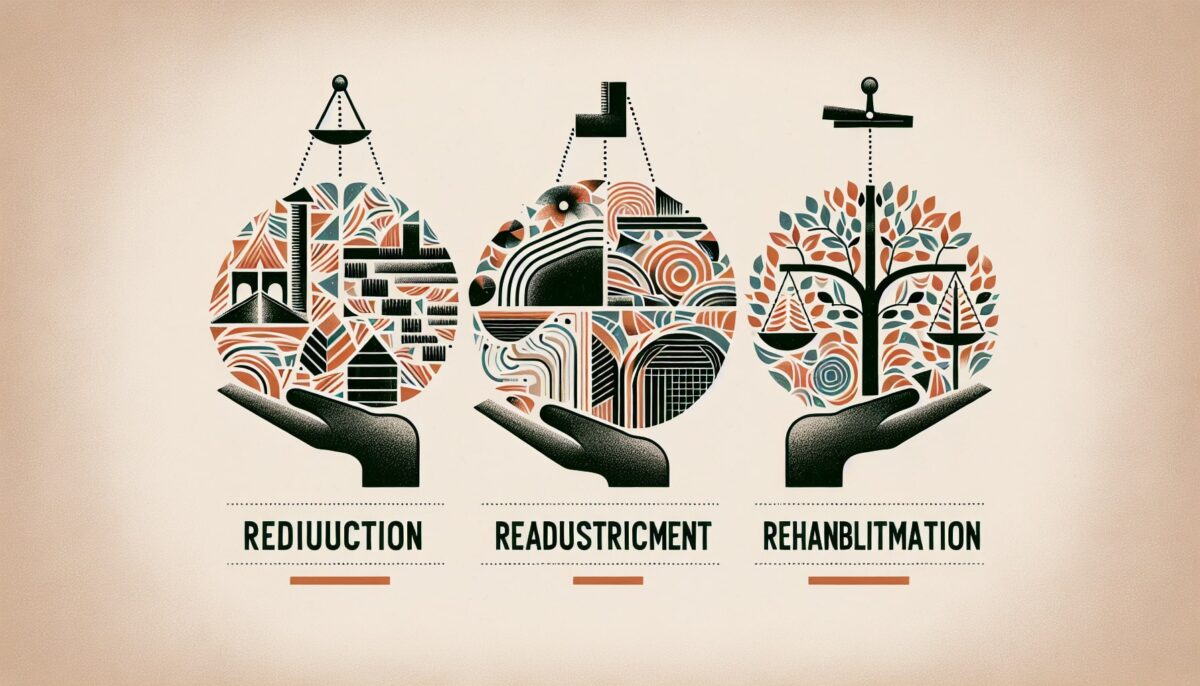The Impact Unveiled: Dangers of Drug Use During Pregnancy
Drug Use Risks during Pregnancy
Drug use during pregnancy poses significant risks to both the mother and the developing fetus. Understanding these risks is crucial for promoting maternal and fetal health. In this section, we will explore two important aspects: the impact of drug use on stillbirth risk and the occurrence of neonatal abstinence syndrome.
Impact on Stillbirth Risk
Using drugs during pregnancy, whether they are illicit substances or legal substances used inappropriately, can increase the risk of stillbirth. Research has shown that smoking tobacco or marijuana, taking prescription pain relievers, or using illegal drugs during pregnancy is associated with double or even triple the risk of stillbirth.

It is crucial for pregnant women to understand the potential consequences of drug use on their pregnancy outcomes. Seeking support and guidance from healthcare professionals can help in reducing the risk of stillbirth and ensuring the well-being of both the mother and the baby.
Neonatal Abstinence Syndrome
One of the significant consequences of drug use during pregnancy is the occurrence of neonatal abstinence syndrome (NAS). NAS can develop when a baby is exposed to certain drugs in utero and experiences withdrawal symptoms after birth .
Regular use of some drugs during pregnancy, such as opioids, can lead to the development of NAS. When the baby is born, they may experience symptoms such as tremors, excessive crying, poor feeding, and difficulty sleeping. The severity and duration of NAS symptoms can vary depending on the type and amount of drugs used during pregnancy.
Medical professionals can provide appropriate care and support for babies with NAS, ensuring their comfort and well-being during the withdrawal process. Early identification and management of NAS can help improve outcomes for these infants.
Understanding the risks associated with drug use during pregnancy is crucial for expectant mothers. It is important to seek prenatal care and be open and honest with healthcare providers about any substance use. This will enable healthcare professionals to provide appropriate support, guidance, and interventions to mitigate the risks and promote the health of both the mother and the baby.
Effects of Substance Use
Substance use during pregnancy can have significant effects on both the mother and the developing fetus. Different substances can pose various risks and potential complications. Let’s explore the effects of alcohol, tobacco, and marijuana, as well as cocaine and opioids, and prescription pain relievers on pregnancy.
Alcohol, Tobacco, and Marijuana
The consumption of alcohol, tobacco, and marijuana during pregnancy can have detrimental effects on the developing fetus. According to the National Institute on Drug Abuse (NIDA), smoking tobacco or marijuana, taking prescription pain relievers, or using illegal drugs during pregnancy is associated with double or even triple the risk of stillbirth.
Alcohol consumption during pregnancy has been linked to a range of problems known as fetal alcohol spectrum disorders (FASDs). These disorders can cause physical, behavioral, and intellectual disabilities in the child. Additionally, children born to mothers who both drank and smoked beyond the first trimester of pregnancy have a twelvefold increased risk for sudden infant death syndrome (SIDS) compared to those unexposed or only exposed in the first trimester of pregnancy.
Cannabis use during pregnancy may lead to adverse effects on the fetus, including low birth weight and length. These effects may be more pronounced in women who consume marijuana frequently, especially in the first and second trimesters.
Cocaine and Opioids
Cocaine and opioids are highly addictive substances that can have severe consequences when used during pregnancy. The use of cocaine during pregnancy can increase the risk of preterm birth, placental abruption, and developmental issues in the newborn. It may also contribute to long-term behavioral and cognitive problems for the child.
Opioid use during pregnancy can lead to neonatal abstinence syndrome (NAS), in which the baby experiences withdrawal symptoms after birth. NAS can cause difficulties for the newborn, including respiratory problems, feeding issues, and irritability. Retrospective reviews suggest that around 2.5% of pregnant women and about 20% of those with US Medicaid insurance received at least one prescription for an opioid during pregnancy, highlighting the prevalence of opioid use.
Prescription Pain Relievers
The use of prescription pain relievers during pregnancy should be carefully monitored. Opioid pain medications, such as hydrocodone and oxycodone, can carry risks for both the mother and the developing fetus. Polysubstance use, including the misuse of prescription pain relievers, is common during pregnancy. It’s essential to address these issues through appropriate medical care and support.
Understanding the potential effects of substance use during pregnancy is crucial for the health and well-being of both the mother and the child. It is highly recommended that pregnant individuals consult with healthcare professionals to receive appropriate care and guidance to ensure a healthy pregnancy and minimize risks associated with substance use.
Behavioral and Developmental Impact
When drugs are used during pregnancy, they can have significant behavioral and developmental effects on both the mother and the unborn child. Understanding these potential impacts is crucial for raising awareness about the risks associated with drug use during pregnancy.
Cognitive and Emotional Issues
Substance use during pregnancy can contribute to various cognitive and emotional challenges for the child. Most drugs of abuse can easily cross the placenta and affect fetal brain development, which can have long-lasting implications for brain structure and function. Prenatal exposure to alcohol, nicotine, cocaine, amphetamine, ecstasy, and opiates, among other drugs, can lead to alterations in neurodevelopmental trajectory.
Children exposed to drugs in utero may experience difficulties with memory, attention, and learning. They may also exhibit behavioral problems, such as impulsivity and hyperactivity. These cognitive and emotional issues can persist into childhood and adolescence, impacting academic performance and social interactions.
Language and Academic Challenges
Drug use during pregnancy has been associated with language and academic challenges in children. The developing brain can be particularly vulnerable to the effects of drugs, leading to disruptions in language acquisition and cognitive abilities. Children exposed to drugs prenatally may have delayed language development and struggle with expressive and receptive language skills.
Moreover, academic performance may be affected by prenatal drug exposure. These children may experience difficulties with reading, writing, and math skills. It is important to note that the severity of these challenges can vary depending on the specific substance used, the timing and duration of exposure, and individual factors.
Understanding the potential behavioral and developmental impact of drug use during pregnancy is essential for healthcare providers, policymakers, and individuals. By raising awareness and providing support to pregnant women struggling with substance use, we can help mitigate these adverse effects and promote healthy development for both mothers and their children.
Substance Use Prevalence
Understanding the prevalence of substance use during pregnancy is crucial in addressing the risks and consequences associated with it. This section will explore the trends in illicit drug use and commonly used substances among pregnant women.
Trends in Illicit Drug Use
According to a US national survey conducted in 2012, approximately 5.9% of pregnant women reported using illicit drugs during pregnancy. This includes the use of substances such as cocaine, methamphetamine, ecstasy, and heroin. It is important to note that the use of illicit drugs during pregnancy can have serious implications for both the mother and the developing fetus.
In recent years, there has been an alarming increase in the use of cannabis among pregnant women in the United States. Between 2010 and 2017, cannabis use more than doubled among pregnant women. This trend raises concerns as the long-term effects of prenatal cannabis exposure are still being studied.
Commonly Used Substances
The most frequently used substances during pregnancy are tobacco, alcohol, and marijuana, followed by cocaine and opioids. These substances pose significant risks to both the mother and the developing baby.
- Tobacco: Between 2005 and 2014, approximately 23% of adolescent and 14.9% of adult pregnant women reported using tobacco. Smoking cigarettes during pregnancy is associated with a higher risk of preterm birth, low birth weight, and developmental issues in the child.
- Alcohol: A US national survey conducted in 2012 revealed that 8.5% of pregnant women reported drinking alcohol during pregnancy. Alcohol consumption during pregnancy can lead to fetal alcohol spectrum disorders (FASDs), which are characterized by physical, behavioral, and intellectual disabilities.
- Marijuana: As mentioned earlier, the use of cannabis among pregnant women has been on the rise in recent years. The potential risks of prenatal marijuana exposure are still being studied, but it is known that THC, the psychoactive component of marijuana, can cross the placenta and affect fetal development.
- Cocaine and opioids: While the prevalence of cocaine use during pregnancy has decreased in recent years, it is still a concern. Additionally, the misuse of prescription opioids during pregnancy has become a significant issue. Retrospective reviews suggest that about 2.5% of all pregnant women and approximately 20% of those with US Medicaid insurance received at least one prescription for an opioid during pregnancy.
It is important to note that these statistics may vary across different regions and populations. However, the overall prevalence of substance use during pregnancy highlights the need for awareness, education, and support to address this public health concern.
Treatment and Prevention
Addressing drug use during pregnancy requires a comprehensive approach that includes screening, diagnosis, and appropriate treatment. By implementing effective strategies, healthcare providers can help pregnant individuals who are struggling with substance use to receive the support they need for a healthier pregnancy and better outcomes for both the mother and the baby.
Screening and Diagnosis
Ideally, all pregnant women should be screened for substance use, as it is a common issue during pregnancy. Screening can help identify individuals who may require further evaluation and intervention. Healthcare providers can use validated screening tools to assess substance use patterns and determine the need for additional support.
Once a positive screen is identified, prompt diagnosis is crucial. Accurate diagnosis allows healthcare providers to tailor treatment plans to the specific needs of the individual. Comprehensive assessments can include evaluating the type and severity of substance use, co-occurring mental health conditions, and any underlying medical concerns.
Medication-Assisted Treatment
Treatment of substance use disorders during pregnancy is essential for improving outcomes for both the pregnant individual and the baby. Medication-assisted treatment (MAT) is a recommended approach for pregnant women with opioid use disorder (OUD). MAT involves the use of medications such as methadone or buprenorphine, which help manage withdrawal symptoms and cravings while minimizing the risks associated with illicit drug use.
MAT should be accompanied by comprehensive care that includes behavioral counseling and psychosocial support. Enrolling pregnant individuals with OUD in a comprehensive program can help them maintain sobriety until delivery. However, it’s important to recognize that postpartum relapse is common, particularly for substances like tobacco, marijuana, and alcohol, with rates as high as 80% in the first year after giving birth.
In addition to MAT, other substance use disorders can be treated through abstinence-based approaches. Pregnancy often serves as a strong motivator for abstinence, and many women naturally decrease or refrain from using substances like tobacco, alcohol, marijuana, and cocaine as their pregnancy progresses. However, ongoing recovery and support are crucial following delivery, as postpartum unintentional overdoses contribute to maternal mortality. Close follow-up during the first postpartum year can help identify and address any relapse risks or challenges that may arise.
By implementing screening and diagnosis protocols, along with appropriate treatment approaches like medication-assisted treatment, healthcare providers can play a vital role in supporting pregnant individuals with substance use disorders. This comprehensive approach helps reduce the risks associated with continued substance use during pregnancy and promotes better outcomes for both the mother and the baby.
Long-Term Effects
The impact of drug use during pregnancy extends beyond the immediate risks to both the mother and the developing fetus. Long-term effects can have significant implications for brain development and impose societal and economic burdens.
Brain Development Implications
Most drugs of abuse have the ability to cross the placenta and affect fetal brain development. In utero exposures to drugs can result in long-lasting alterations in brain structure and function. Substances such as alcohol, tobacco, cocaine, amphetamines, ecstasy, and opiates can disrupt the normal trajectory of neurodevelopment, potentially leading to a range of cognitive and behavioral issues later in life.
Prenatal drug exposures have been associated with a variety of brain deficits. The major protein targets of drugs of abuse play crucial roles in shaping brain development, and disruptions caused by fetal drug exposures can contribute to a wide range of neurological impairments. The specific effects can vary depending on the type of substance used, dosage, timing of exposure, and overall postnatal care.
Societal and Economic Burdens
Substance use disorders among pregnant women continue to present a significant public health concern. The impact of drug use during pregnancy extends beyond the individual and can impose socioeconomic burdens on society. Fetal drug exposures can lead to developmental risks for the child, necessitating increased medical and social services.
The prevalence of illicit drug use among the general population remains a concern. Recent data indicates that nearly 9.2% of the population, which accounts for approximately 25 million Americans aged 12 or older, are current illicit drug users. Despite prevention and education efforts, the rate of current illicit drug use among pregnant women aged 15-44 has remained constant at 5.9%.
Legal drugs such as alcohol and nicotine also pose significant challenges due to their unintended effects on the fetus. Approximately 8.5% of women aged 15-44 report current alcohol use during pregnancy, and the prevalence of cigarette smoking among pregnant women has held steady at around 16-17%.
The long-term effects of drug use during pregnancy not only impact the individuals involved but also place a strain on society as a whole. The need for increased medical services, educational support, and social intervention can create significant socioeconomic burdens.
Understanding the long-term implications of drug use during pregnancy reinforces the importance of prevention, early intervention, and support services. By addressing substance use disorders effectively, we can help mitigate the potential long-term consequences for both individuals and society.










